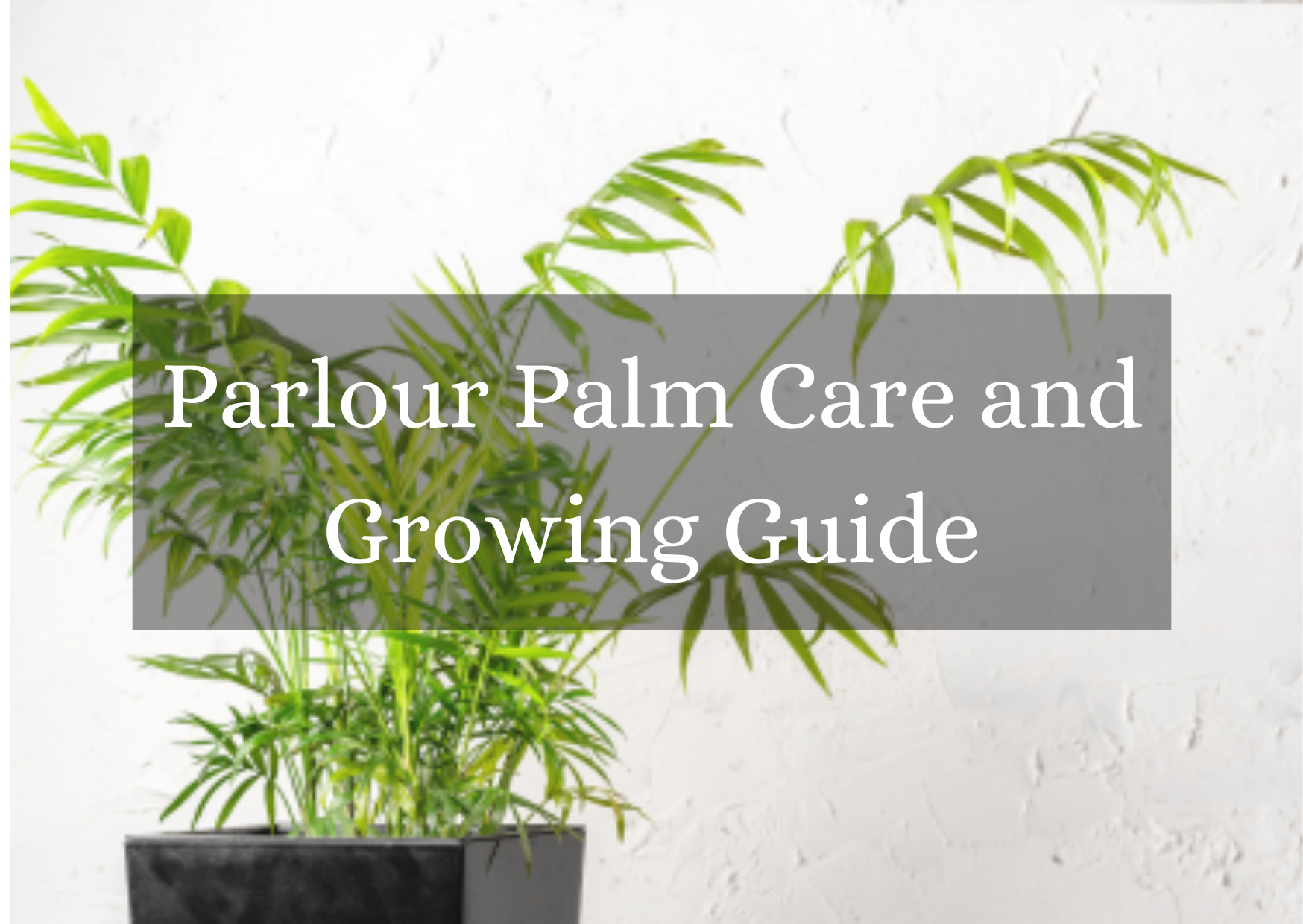Last Updated on April 9, 2024 by Real Men Sow
Parlour palm (Chamaedorea Elegans) is an indoor palm that has attractive, light-colored fronds. It is native to Mexico and Guatemala. Since Victorian times, it has been a favorite house plant. It was often displayed in the parlor, which is considered the most important room in the house. It is often sold in a clump with several young plants.
Best Growing Conditions For Parlour Palm
Parlour palms are low-maintenance plants that can tolerate low light levels and dry conditions. It can filter and purify stagnant air, making it a great air purifier. Parlor palm is slow-growing and can produce tiny yellow flowers that are followed by black fruits when they mature. Parlor palm is safe for cats and dogs.
To get the best results, plant your parlor palm in houseplant soil in a sunny spot that is not too bright. During the growing season, water regularly and give it a good feed every month. Keep the compost dry during winter. Pot-bound plants should be repotted in spring.
How To Grow Parlour Palm
Although the parlor palm is easy to maintain, it will need some extra care. Avoid direct sunlight. Water only after the top few centimeters of compost has dried in spring and summer. In winter, reduce watering. In spring and summer, feed the plant with liquid feed twice a month. Mist the plants a few times per week.
Where To Grow A Parlour Palm
Parlour palms thrive in indirect, bright light. However, they can tolerate some shade. Avoid direct sunlight as it can scorch the leaves. Warm rooms are essential for parlour palms. They need to be between 18° and 24°C, with at least 10°C.
How To Plant A Parlour Palm
Grow them in a mixture of soil-based, peat-free, multipurpose compost. Parlor palms thrive when they are snugly in their pot, so repot only when roots have emerged from the bottom of the pot. Only repot in spring into a slightly larger container. This may only be necessary every three years.
How do you take care of a Parlour Palm?
- When the top few centimeters have dried, water thoroughly. This can be very common in hot weather. Make sure the compost is not too dry and that it is evenly moist. Winter is a time when you should water less and keep the soil moist.
- Dry air is not harmful to parlour palms, but dry air can cause leaf tips to turn brown. To prevent this, mist the leaves a few times per week.
- Any brown fronds that are at the base should be removed. It’s common for them to die from time to time. Use a weak liquid fertilizer to feed your plants once per month in spring and summer.
- To remove any dust, wipe the leaves often. You can also use a hot shower to clean your plant, or you could even put it outside in a downpour.
How To Propagate A Parlour Palm
Dividing parlor palms is the best way to make it more. You may notice that the stem at the end of the plant will naturally fall off when you repot it in spring. You can also cut off clumps or stems with a sharp knife, make sure some of the roots are still attached. Put the potting compost in a new pot.
After your plant has produced fruit, you can let them dry and then sow the seeds. To germinate they need to be at 27°C, meaning, you will need a heated propagator.
Growing Parlour Palm: Problem Solving
Brown Leaf Tips
This is usually due to too dry air. You may also find it too cold or that the plant has been neglected. You can trim the brown tips, but not the green growth because it will only create more brown tips.
Yellowing Lower Leaves
As they age, yellowing is normal for lower leaves. If you notice yellowing leaves in your parlor palm, it could be because the plant has been exposed to too much sun. You could also have under-watered.
Browning Base of Fronds
The base of the fronds is normal for browning. These can be removed. Parlor palms don’t like to sit in soggy, cold compost.
Brown Patches
Sunburn can cause brown patches. Take your plant out of direct sun.
Dull and Dry Leaves
If leaves are dull and dry, it could indicate that the air isn’t humid. Misting can help.
Red-Spider Mite
The stems and leaves of the plant will become covered with fine webbing, and the upper surface will become mottled. You will find mites on the underside of the leaves if you use a magnifying lens. Humidity can be increased by improving air circulation. Sprays that contain fatty acids and plant oils can be used in place of this.
Mealybugs
Look out for white fluffy blobs that appear on the undersides of leaves. Use a cotton bud or damp cloth to wipe them off. Meat bugs can be difficult to eradicate so make sure you keep checking your leaves.
Scale insects
They’re small sap sucking insects measuring approximately 6mm in length. Use a cotton bud, or a cloth soaked in an insecticide containing essential fatty acids to wipe them off.

